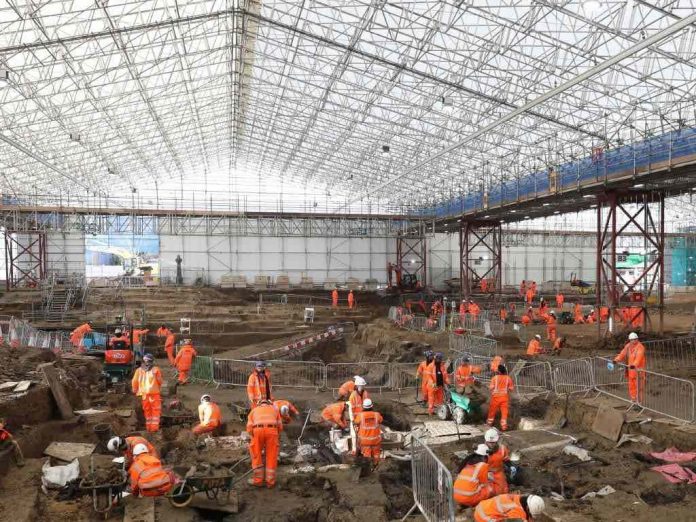Archaeologists working on the HS2 railway project have unearthed the remains of an explorer who led the first circumnavigation of Australia.
Credited with naming the continent, Captain Matthew Flinders also gave his name to towns, mountain ranges and universities across the nation.
Flinders was buried at St James’s Gardens burial ground by Euston station in 1814, but after the building was expanded westwards in the 1840s his headstone was removed and his body was thought to be lost.
As archaeologists took advantage of the on-going construction work for the HS2 line, they uncovered 40,000 human remains at the old cemetery.
They were able to locate the body belonging to the long-dead Royal Navy explorer due to a lead breastplate identifying him that had not corroded.
“The discovery of Captain Matthew Flinders’ remains is an incredible opportunity for us to learn more about the life and remarkable achievements of this British navigator, hydrographer and scientist,” said Helen Wass, HS2 head of heritage.
“Captain Matthew Flinders put Australia on the map due to his tenacity and expertise as a navigator and explorer.”
The archaeologists intend to examine the skeleton to find out how long stretches of life at sea affected the sailor’s body during his life, before ultimately reinterring the remains alongside thousands of others.
Before Flinders’ voyage, the names Terra Australis (Latin for “south land”) or New Holland were preferred for the southern continent Europeans had only just discovered.
But when he hand-drew his own map of the landmass, the explorer opted for the name still in use today.
Flinders was not the only notable figure to be discovered at the Euston site, and the archaeologists hope to gain a snapshot of life in 18th- and 19th-century London by sifting through the remains.
Other people known to be interred at St James’s Gardens include the former slave and bareknuckle boxer Bill Richmond, anti-Catholic activist Lord George Gordon and founder of Christie’s auction house James Christie.
The controversial HS2 project will see a 150-mile route built between London and the West Midlands, and it has enlisted over 1,000 archaeologists to examine dozens of sites along the way.
Other areas of interest include a prehistoric hunter-gatherer site near London and a medieval burial ground in Buckinghamshire.








